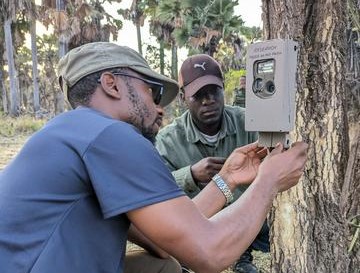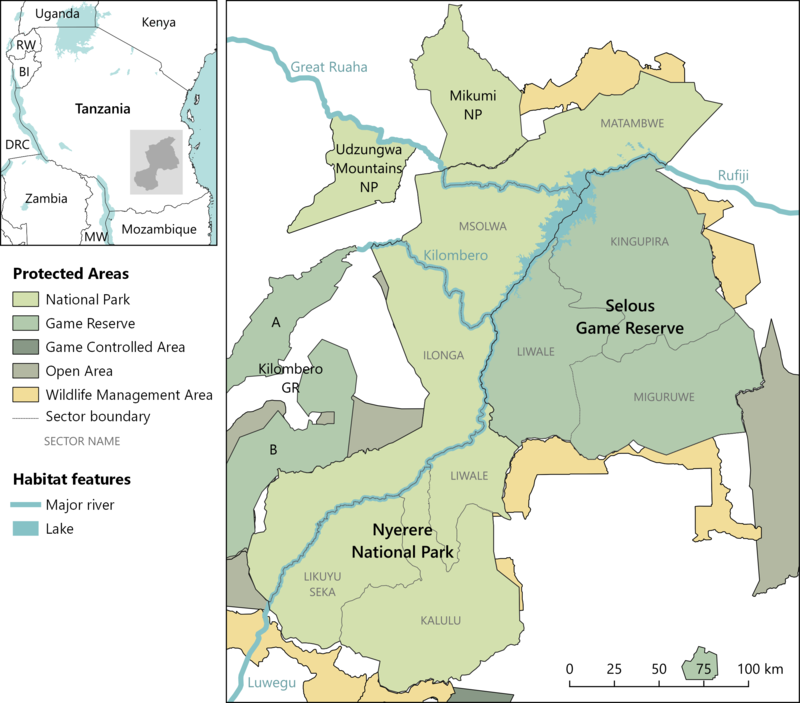Tanzania’s lions need protecting in one of the species’ last remaining strongholds
June 24, 2025The Selous-Nyerere ecosystem in southern Tanzania is one of Africa’s largest wilderness areas. Although considered one of the last remaining strongholds for lions, this population had not been studied for more than a decade until recent efforts by WildCRU researchers to shed light on the current status of the population.
This assessment, which looked not just at lions but also at leopards, spotted hyaena, and African wild dogs, presented a considerable challenge: the entire ecosystem spans more than 80,000 km2, with Selous Game Reserve and Nyerere National Park together covering nearly 50,000 km2 – an area larger than Switzerland. In addition to having to cover an enormous area, the researchers also had to contend with the challenge of collecting data on large carnivores, whose naturally low densities and secretive behaviour make population monitoring particularly difficult.
Over three dry seasons (2020-2022), the researchers set 638 remotely triggered camera traps along roads and trails at seven sites, each spanning 500–2500 km2. After they individually identified all lions in the photos, the researchers estimated population density based on where and when each lion was captured using a method called spatially explicit capture-recapture (SECR) modelling. Density appeared to mostly be driven by the availability of prey, which is itself primarily driven by the food available in miombo woodlands – an understudied but important habitat for lions, making up nearly a quarter of the species’ present range (24%).
However, the study revealed human impacts in areas close to boundaries, including bushmeat snaring and intentional poisoning. This may explain why the lowest population density was found in the survey site closest to unprotected village lands – which had the second highest number of recorded illegal incursions and animals with visible snare injuries – despite this site also having the second highest abundance of preferred prey.

Image: Charlotte Searle
 Image: Charlotte Searle
Image: Charlotte Searle